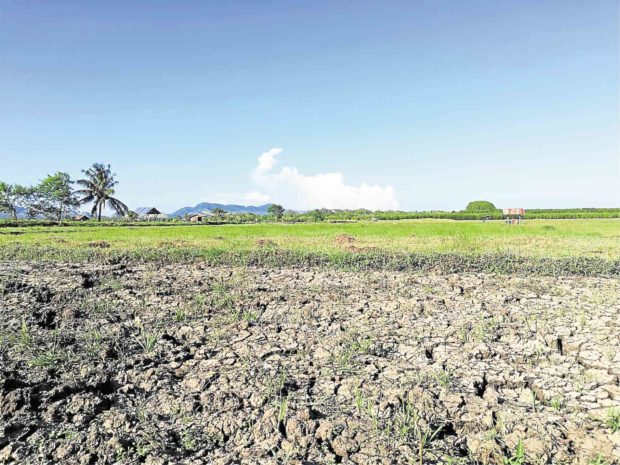
DRY LAND Rice farms in Candijay town, Bohol, start drying up amid the lack of rainfall in the province. —LEO UDTOHAN
TAGBILARAN CITY, Bohol, Philippines — The municipal government of Candijay in Bohol province placed the town under a state of calamity to help the more than 2,000 farmers who failed to plant palay due to the long drought that had dried up their farmlands.
Jeryl Lacang-Fuentes, municipal disaster risk reduction and management officer of Candijay, said the resolution was passed by the town council last week to allow officials to tap the calamity fund and hasten assistance to farmers
Palay wilting
Candijay was the second town in Bohol that was placed under the state of calamity due to the water shortage.
In August, Sierra Bullones town was placed under a state of calamity after the drought destroyed more than P122 million worth of palay and other crops in July.
The dry spell also damaged 7,244.44 metric tons of palay and other crops in 7,863 hectares in 22 towns, records showed.
The dry spell that hit the town starting June had affected the agricultural and fisheries sectors in Candijay.
Out of 3,144 farmers in the town, only 1,021 were able to plant in June as rice fields started to dry up due to lack of rain, local officials said.
Fuentes said the drought had also wilted palay planted in 16.11 ha of rice fields that were either irrigated or were located near a water source.
Food supply
At least 200 seaweed growers in Barangay Panas had complained of heavy losses after the dry spell affected about 50 ha of seaweed farms.
“If this … weather condition continues, crop loss and livestock mortality will also increase, which will eventually affect the food supply in the municipality of Candijay,” said municipal agriculturist Ermita Bual in a report.
Candijay’s two water sources in the villages of Panadtaran and La Union had dried up due to lack of rain while water levels in six other water sources were decreasing, Fuentes said.
“The remaining local water sources have significantly dropped to below critical level that the production cannot meet the current demand of the consumers,” Fuentes said, noting that the town government had tapped water delivery trucks to bring water to households. —Leo Udtohan